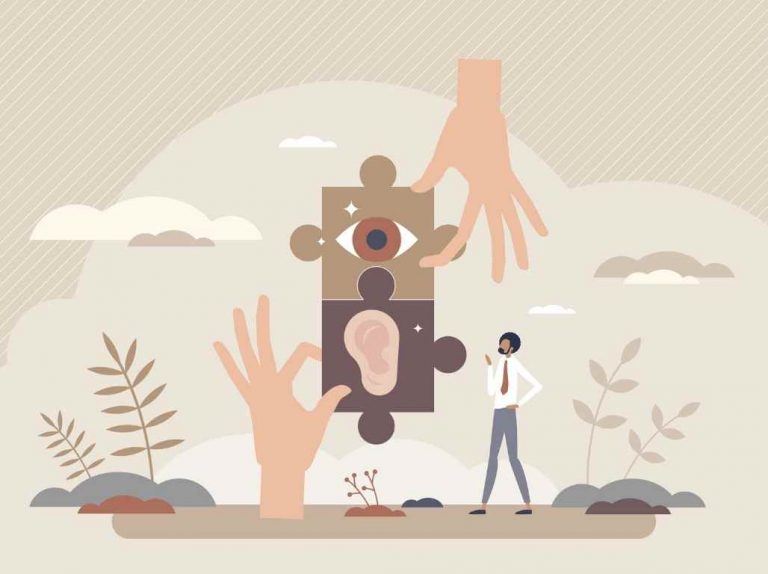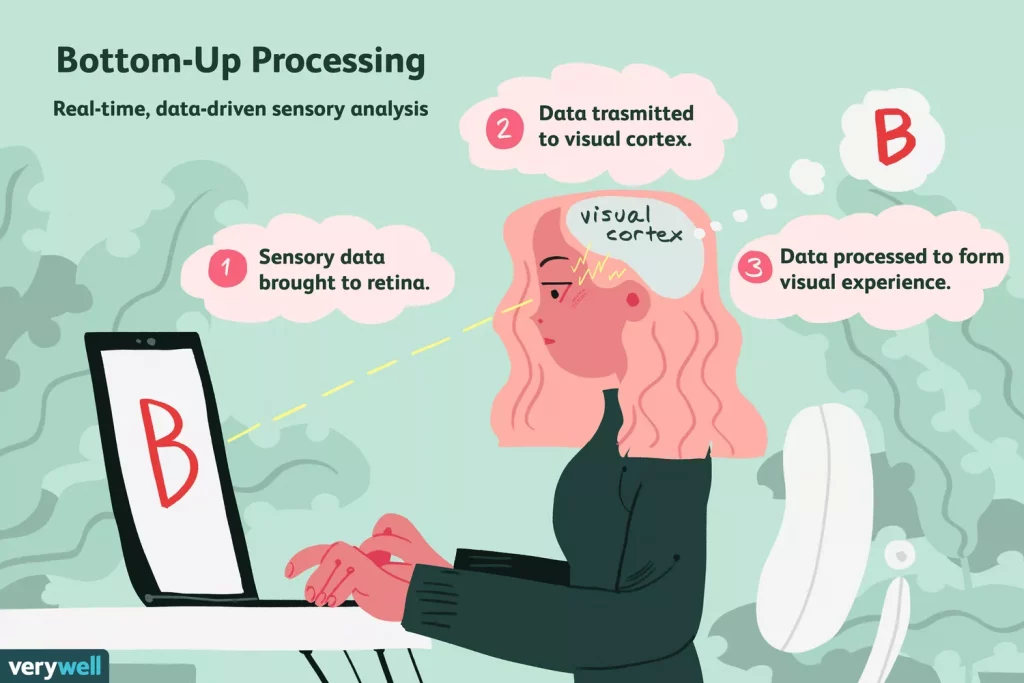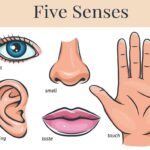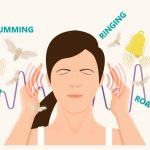Bottom up processing may be a new concept for you. It’s how we use our sensory perceptions to make sense of our world. Read on to see how it works.
In order to make sense of the world, we must take in energy from the environment and convert it to neural signals, a process known as sensation. It is in the next step of the process, known as perception, that our brains interpret these sensory signals. Verywell mind
Bottom-up Processing in Psychology: This theory describes perceptions as beginning with external stimuli (what we see) and progressing upwards until a mental image of the object is formed in the brain. It would appear from this process that our perceptions rely on sensory information only. We build our opinions based on the information provided by our senses. Your senses also get distracted when you consume alcohol in a huge amount, to avoid such addiction you can go for alcohol rehab Arizona.
What Is Sensation
It is the process by which our brain perceives the world by taking in energy from the environment and converting it into neural signals. These sensory signals are then interpreted by our brains in the next step, called perception.
Where Does Bottom Up Processing Theory Come From
Psychologist E. J. Gibson has introduced the theory of bottom-up processing. To gain an understanding of perception, Gibson used a direct approach.
He believed that perception was a “what you see is what you get” process, instead of being dependent upon learning or prior knowledge.
In Gibson’s view, there’s no difference between sensation and perception; they’re the same. Because his theory assumes that perception can be understood exclusively as the result of environmental stimulation, it is known as the ecological theory of perception.
This Is How Bottom Up Processing Works
The world around us provides us with sensory information, such as light levels. The retina receives these signals.The transduction process converts these signals into electrical impulses that can be transmitted.Electric impulses travel through the visual pathways to the brain, where they are processed in our visual cortex and form the visual experience we have.
Bottom-up approaches break perception down into its most fundamental elements instead of looking at it holistically, considering how sensory information, visual processing, and expectations affect the way we perceive.
Real-Life Applications of Bottom Up Processing
To better understand bottom-up processing work, let us compare it to how top-down processing works. Let us have a look at examples:
Example No. 1
Letter And Alphabet
Consider that you are looking at an obscure shape. You might perceive that obscure shape as capital letter B just by looking at it on its own, using bottom-up processing.
When the image of that obscure shape is put next beside several context clues, such as next to the number 12 and the number 14, the obscure shape might appear as the number 13 rather than a capital B.
In this case, top-down processing is used by interpreting visual information in the context of surrounding cues.
Example No. 2
Prosopagnosia also known as face blindness
Prosopagnosia is a neurological disease characterized by the inability to recognize familiar faces, including one’s own. Certain abilities to process visual information and to carry out cognitive functions are not affected. People experience functional sensation but incomplete perception. Faces familiar to the patient cannot be recognized, but they can perceive them.
Bottom-up processing is still effective in this case. But their inability to relate what they see to stored information results from a lack of top-down processing.
Example No. 3
Ink Blobs (Visual Illusions)
Even though perception involves both of these processes, they often appear to be at odds with one another.
Visual illusions, for example, can demonstrate the effects of bottom-up and top-down processes on our perception of reality.
Have you ever witnessed a variety of illusions where random ink blobs initially look like ambiguous shapes, but after a moment seem to resemble a human face?
These ink blobs would still resemble randomly drawn shapes on paper if only bottom-up processing were used.
As a result of our brain’s predisposition for identifying faces and top-down processes, we may begin to perceive these ambiguous shapes as human faces.
Conclusions about Bottom Up Processing
Bottom-up processing is a sensory analysis that starts at the basic level, that is, with what is detected by our senses. It is a process that starts with sensory data and ends with the brain integrating this sensory information. The retina transmits information to the visual cortex.
It is the perception of stimuli that initiates processing, which is aided by mechanisms developed through evolution. The bottom-up approach is purely data-driven and does not require any prior knowledge. The processing takes place as it happens. Example: If a person sees an alphabet (image) on a screen, their eyes send that information to the brain, which combines it with other information.
It is extremely useful to understand certain aspects of perception by studying bottom-up processing.
More Articles To Read
Individualized Addiction Treatment Brings Hope
Here’s To Hope For LGBTQ Addiction Treatment
How Women’s Trauma Contributes To Addiction






















